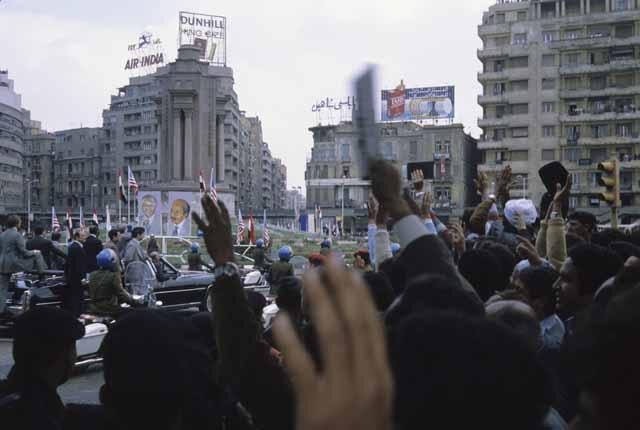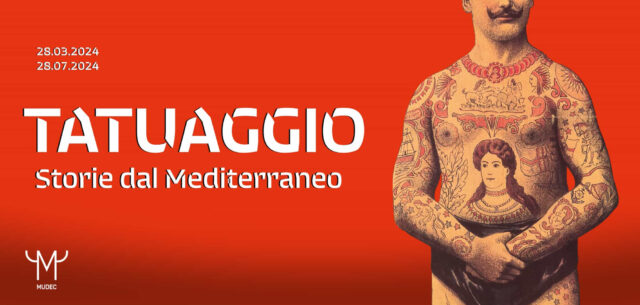 Up until this past February it would have been unthinkable to imagine that Egypt’s president for nearly 30 years (and clearly one of the strongest Arab leaders) could possibly wind up in the very same prison where so many of his critics have been locked up. Baffling turn of events, to say the least! President Hosni Mubarak was no ordinary leader and up until recently he was able to triumph over every obstacle to his rule by simply using force or skillful negotiations. His unorthodox ways didn’t matter to anyone on the outside, least of all to his two staunchest supporters, the Americans and the Israelis, as long as he maintained the peace treaty signed by his predecessor, Anwar Sadat.
Up until this past February it would have been unthinkable to imagine that Egypt’s president for nearly 30 years (and clearly one of the strongest Arab leaders) could possibly wind up in the very same prison where so many of his critics have been locked up. Baffling turn of events, to say the least! President Hosni Mubarak was no ordinary leader and up until recently he was able to triumph over every obstacle to his rule by simply using force or skillful negotiations. His unorthodox ways didn’t matter to anyone on the outside, least of all to his two staunchest supporters, the Americans and the Israelis, as long as he maintained the peace treaty signed by his predecessor, Anwar Sadat.
In the late 1970s and early 1980s, while Mubarak was Sadat’s vice president, I was a student at the American University of Cairo (AUC). I don’t recall ever hearing the then obscure politician’s name. In fact, I didn’t even know that Sadat had a vice president, because he was such a “larger than life” president, a flamboyant personality who overshadowed everyone in his entourage. He had taken the country by the reins and was leading it in a new direction, a track he wanted full credit for. So, it is not surprising that Mubarak kept a low profile, running nitty-gritty affairs of the government instead. In retrospect, it was probably a wise decision on his part.

Sadat enjoyed being in the limelight and that’s why he handpicked Mubarak as his second-hand- man. The president knew Mubarak well, and he had kept him under his protective wing. Mubarak was loyal and trustworthy, but at the same time had the necessary credentials for the position of vice president. Mubarak was after all a hero of sorts. He had risen up through the ranks of the air force and served as its commander from 1972 to 1975, a promotion that Sadat had granted him. Among Mubarak’s achievements was launching the first surprise air attack on Israel ground forces stationed in Sinai, which marked the beginning of the Yom Kippur War.
My first trip to Egypt came at a fascinating time. From the moment I arrived, in February 1979, everyone I came into contact with wanted to know everything about me. Sometimes I felt like I were some sort of a celebrity. After inquiring about my nationality and hometown, people wanted to know what I thought about Egypt’s peace treaty with Israel and my opinion of President Sadat. I felt like they needed reassurance from a westerner that Sadat’s radical decision was a step in the right direction. After all, their country had gone from being at the helm of the Arab world, to being ostracized as a renegade. Egyptians had ambivalent feelings about their future.
 Shortly after I arrived, U.S. President Jimmy Carter, who had brokered the peace treaty, made a visit to Egypt, and Cairo was buzzing with excitement. American and Egyptian flags hung from lampposts and pictures of Sadat and Carter were plastered on overpasses and buildings along the route the two heads of states traveled. Roads were closed off and Egyptians lined the way to greet the two leaders as they passed in an open motorcade waving to the crowds. From my naïve perspective, I thought all of Egypt was rejoicing. Years later, I would realize that there was a silent majority that strongly disapproved of Sadat’s initiative.
Shortly after I arrived, U.S. President Jimmy Carter, who had brokered the peace treaty, made a visit to Egypt, and Cairo was buzzing with excitement. American and Egyptian flags hung from lampposts and pictures of Sadat and Carter were plastered on overpasses and buildings along the route the two heads of states traveled. Roads were closed off and Egyptians lined the way to greet the two leaders as they passed in an open motorcade waving to the crowds. From my naïve perspective, I thought all of Egypt was rejoicing. Years later, I would realize that there was a silent majority that strongly disapproved of Sadat’s initiative.
Egypt was changing in more than one way. In addition to the peace treaty, Sadat introduced the Open Door policy “infitah” that marked a definitive break from former president Gamal Abdel Nasser’s socialist leanings. Foreign companies, particularly western enterprises, were encouraged to invest in Egypt. Two decades of social and economic isolation had ended and given way to newfound freedoms. Up until then, authorities had discouraged Egyptians from mixing with foreigners. Between the 1967 and 1973 Arab-Israeli wars, western tourists were often suspected of being spies. There was a period when it was deemed a security risk for Egyptians to invite westerners into their homes.
The date October 6, 1981 will forever be encrusted in my memory. That morning, I had woken up at the crack of dawn to catch a flight to Spain, where I was going to visit a friend as AUC was off for due to the October War celebration. On my way to the airport, I remember seeing as barricades being erected in preparation for the military parade which was due to take place later that morning. When I arrived in Spain, I didn’t hear any news for the remainder of that day. However, the next morning, when I walked out into the street to pick up a copy of the International Herald Tribune, I was stunned when I saw photos of Anwar Sadat splashed across the front pages of every Spanish and foreign newspaper and magazine.
When I returned to Cairo, a few days later, it felt as if I were in a different Egypt, not the one I had come to know over the last few years. The mood was sullen, but there were no outward signs of grief, like there was a decade earlier when President Gamal Adel Nasser had passed away. No, it felt Egyptians were lying low, frightful of what was to come next. Up until then, Sadat had been in the driving seat and now he was gone.
I was shocked when I returned to AUC and found both campuses surrounded by armored personnel carriers and tanks. It didn’t take long to find out why. One of the sons of the former vice president, who had become president, was a student at the university. That was the first time I remember hearing the name Mubarak!
























1 Comment
è un’articolo stupendo! E poi le foto – ironia della sorte sono state scattate proprio a Piazza Taharir, simbolo della rivolta …
Attendo con entusiasmo il prossimo articolo.